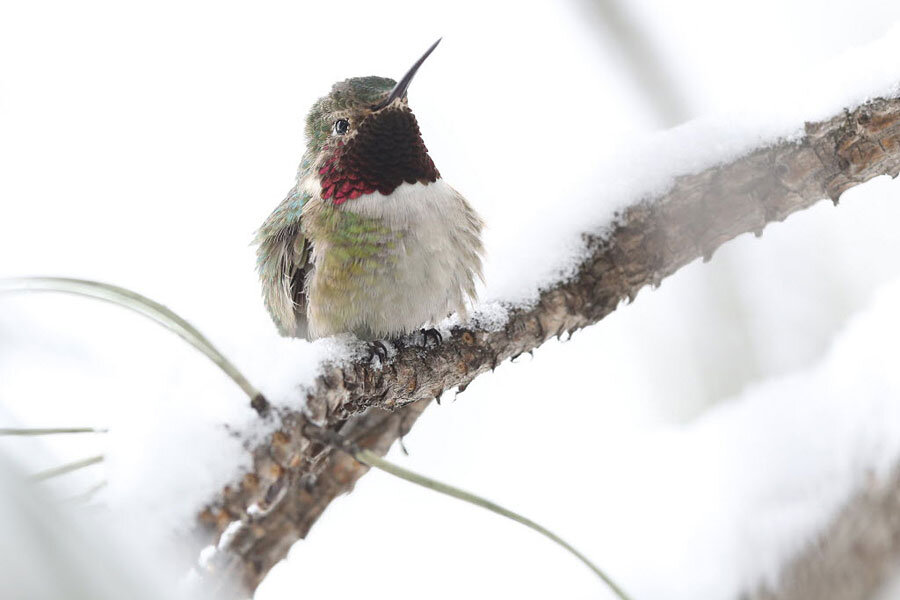These tiny birds can fly over 1,000 miles – nonstop
Loading...
In a flash of green and iridescent red, ruby-throated hummingbirds can zoom past at 60 miles an hour or hover in midair, wings beating 53 times a second.
These hummingbirds weigh about a tenth of an ounce, little more than a penny. And every autumn, the tiny birds fly from eastern North America to Central America for the winter.
On this trek, the birds can fly a whopping 1,250 miles without stopping, according to a new study.
To learn more about the itty-bitty birds' impressive migration, a team of researchers decided to study the birds that passed through Alabama's Bon Secour National Wildlife Refuge on their trip south, from 2010 to 2014. Their insights into the enigmatic little birds were published on Wednesday in the journal The Auk: Ornithological Advances.
"Hummingbirds are really charismatic animals," study lead author Theodore J. Zenzal tells The Christian Science Monitor in a phone interview. But "there's just really not much known about them."
The birds' capability to fly over 1,000 miles without stopping for a rest or a snack is not just eye-popping, it suggests they could fly over the Gulf of Mexico rather than around it on their trek south. That body of water is about 1,000 miles across at the widest part.
So far, only anecdotal evidence suggests the birds are actually making that over-water trek. Engineers on oil rigs and other seafarers have mentioned seeing the birds, but scientists don't know if the ruby-throated hummingbirds are flying that way en masse.
And that's not all the scientists learned. The walnut-sized birds can also pack on the pounds – well, grams – for this migration.
"These birds can easily double their body mass from about three grams during the breeding season to almost six grams during migration," says Mr. Zenzal.
During the study, Zenzal and his team held a total of 2,729 hummingbirds in their hands to band and study them. He describes the ones that reached almost six grams as "little butterballs."
"Knowing that the fuel load is more than sufficient to cross the Gulf of Mexico is most useful," says Andrew Farnsworth, a researcher at Cornell Lab of Ornithology who was not part of this study, in an email to the Monitor. "Whether they do in the fall, either with regularity or under specific conditions, remains to be seen, but knowing that the fuel load is there and the birds can perform is a big step in understanding."
Zenzal also examined if sex or age differences affect when and how efficiently the birds migrate. He found that the older males were generally at the head of the pack moving south, arriving at the Alabama stopover area earliest and in greater numbers earlier in the migration. The older females left the breeding grounds later, while the younger birds, male and female, trickled in throughout the whole migration.
Zenzal was surprised to find that his team caught 28 young hummingbirds for every adult. He theorizes that the research site may not be the best stopover site and so the adults were passing it by in favor of better locations. Or perhaps it's because they have higher fuel efficiencies, he says.
That would explain why they arrive at the wintering grounds earlier too, he says, as they could be moving faster without having to stop as many times.
"That age and sex may fine-tune strategies that birds use, just like humans or other organisms similarly fine-tune, is as key a piece of the message as information about how far these birds might move given their fuel load and what the specific details of timing of passage are in the fall," Dr. Farnsworth says.
He says this new study adds a lot of details to the overall picture of the life of a ruby-throated hummingbird. "Migration makes up a larger percentage of birds' annual cycles than any other set of behaviors. Birds are on the move, so to speak, much more than they are stationary when it comes to migrants. So any and all information we can understand about migration adds to our understanding of the full like cycle of these organisms."






